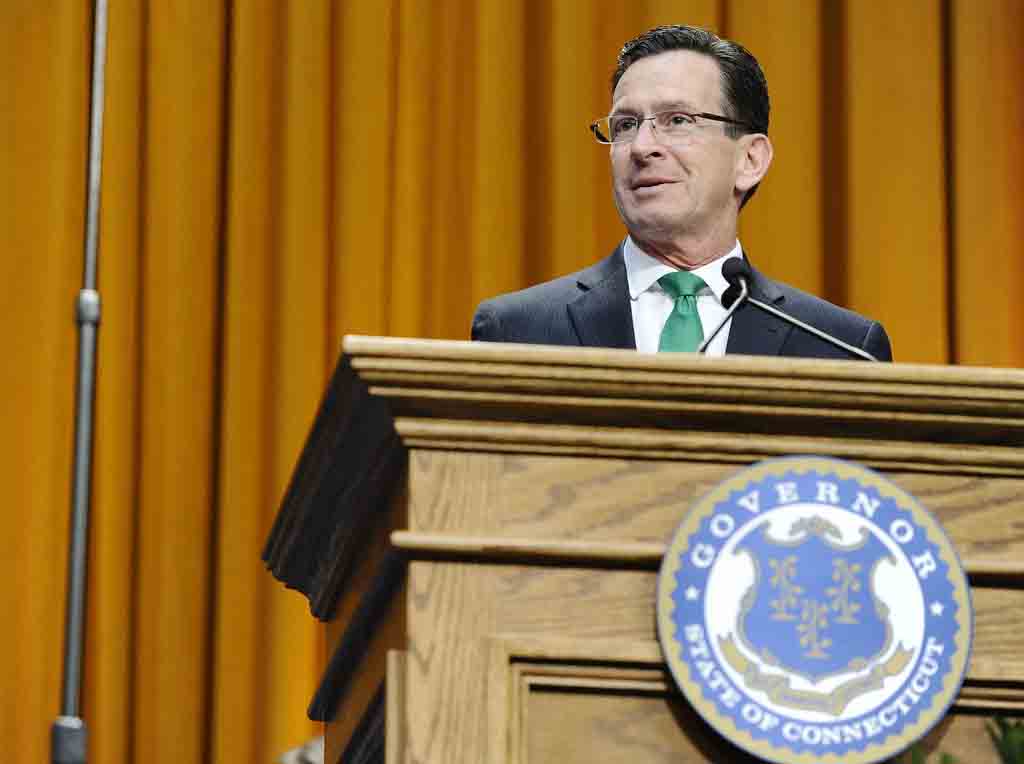
Office Of Governor Dan Malloy
Several months into the heat of the Connecticut gubernatorial campaign, the picture of the race has shifted as politicos and business administrators continue to enter the fray, drop out and clarify policy positions.
In recent weeks, a number of gubernatorial hopefuls have officially declared their candidacy for the governorship. Republican David Stemerman, a Greenwich hedge fund manager, announced his candidacy on Monday, advertising himself as an outsider willing to take on insider politics. On the Democratic side, longtime political figure and former West Hartford Mayor Jonathan Harris said in late February that he would officially run, releasing a list of 59 endorsements from political figures across the state.
But has anything really changed?
According to Gary Rose, a government and politics professor at Sacred Heart University, this year’s race is unique because no clear front runner has emerged.
“[This race] is so unusual because by now there’s usually a name,” said Rose, who will serve as a panelist for the Republican gubernatorial debate on Wednesday. “It’s really amazing that this is so wide open and porous.”
Still, there are a few candidates who have dropped out. Most recently, Mudita Bhargava, the former vice chair of Connecticut’s Democratic Party, removed herself from the race in late February after months of campaigning. Now, she is expected to run for state treasurer.
Despite the steady increase in the number of candidates — a total that has now surpassed 25 people — both Rose and John Dankosky, the host of radio station WNPR’s weekly political roundtable “The Wheelhouse,” say frontrunners have yet to establish themselves on either the Democratic or Republican side. Another expert, Chris Powell, former managing editor for the Journal Inquirer and a Republican political columnist, said he shared this assessment.
Powell said the major prospective Democratic candidates, such as current Lt. Governor Nancy Wyman, have declined to enter the race, and that Republicans do not have “any major officeholders to put up at all.”
The wide-open field could affect the primary season later this summer. Both major political parties will host their conventions in May, where delegates will vote to endorse a candidate for the primary race. Those not receiving the party endorsement need only 15 percent of the convention vote to get on the ballot for the Aug. 14 primaries.
Both Rose and Powell said the current hodgepodge of candidates could lead to a situation in which five or more candidates appear on the primary ballot for each party. This could empower extremist elements in both parties, since a primary candidate could emerge victorious by earning only 30 percent of the vote.
There was a consensus among those interviewed that candidates generally try to appeal to their respective bases during the primary season. For Democrats, this could mean targeting the mobilizable progressive faction of the party, which Dankosky noted has been dissatisfied with outgoing Gov. Dannel Malloy’s relatively moderate business policies.
“Woe to the Democratic candidate who does not pander to the progressive wing,” Rose said.
Powell said Republicans may try to establish a strong stance on firearm issues to appeal to gun owners.
Certain candidates have already begun to align themselves with the base. Ned Lamont, a Democratic candidate who became a progressive hero after his primary victory over U.S. Senator Joe Lieberman in 2006, has cast himself as an outsider and a liberal activist. Lamont told the Hartford Courant on Sunday that he is “not afraid to challenge the status quo.”
Potential Democratic candidate Luke Bronin ’01 LAW ’06 has also adopted a progressive approach. He recently called for Malloy and state legislators to remove the National Rifle Association from state statutes in Connecticut, which would limit the organization’s role in the state’s gun training process.
Still, Rose said most viable candidates do not need to shift to the extremes of their party in order to surpass the 15 percent convention threshold. As a result, he said, many candidates are unlikely to clarify their positions until the primaries begin.
Despite the potential drawbacks, Dankosky, the radio host, said he sees at least one benefit associated with the heavy large slate of candidates vying for top spot.
“I always thought that having more people run for stuff is better than having fewer people running for stuff,” he said. “So people want to run for governor? Good for them.”
Conor Johnson | conor.johnson@yale.edu







